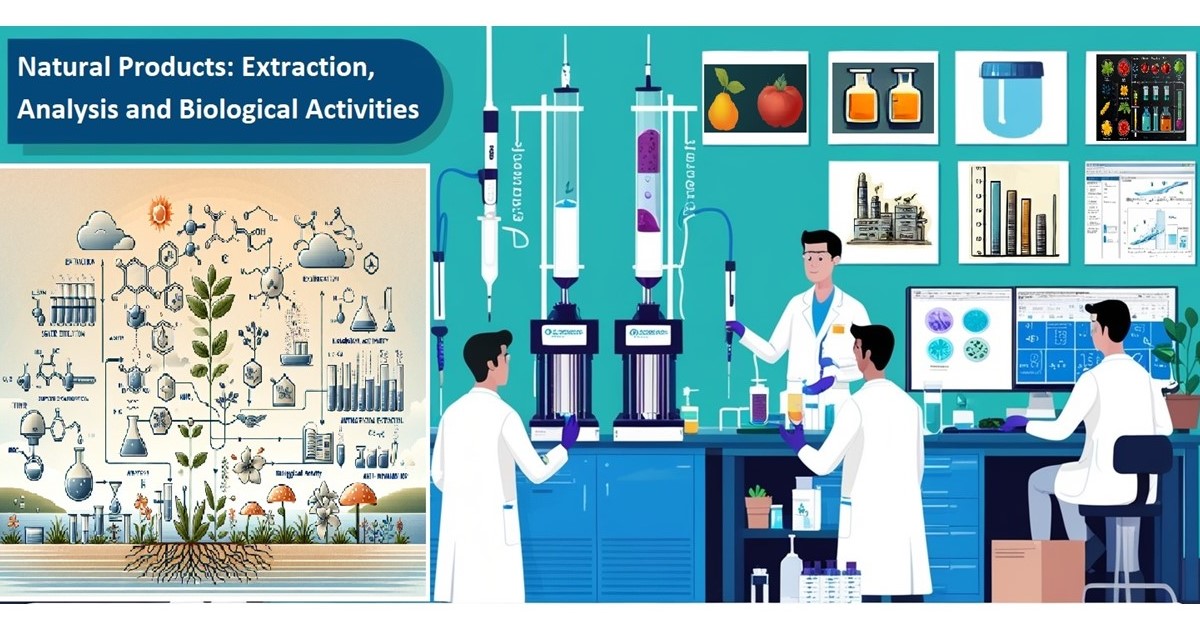- 4.6Impact Factor
- 8.6CiteScore
- 17 daysTime to First Decision
Natural Products: Extraction, Analysis and Biological Activities
This special issue belongs to the section “Natural Products Chemistry“.
Special Issue Information
Dear Colleagues,
With increased demand for natural products by the pharmaceutical, cosmetic, and food industries, much attention is paid to the analysis of plants and herbal preparations. On the one hand, new biotechnological methods of reproducing plants with a high content of metabolites and homogeneous and stable genotypes are being developed; on the other hand, effective methods for their isolation and analysis are being sought. Analysis is generally carried out for two purposes: to check the suitability of a given material and to control the quality of (semi-)products. It should be emphasized that the examination of biological materials is often a very complex combination of techniques and procedures, within which a holistic sample is usually subjected to final analysis using liquid or gas chromatography. A poor choice of isolation method or even a small error or oversight at one of the stages of the procedure can doom the entire analysis to failure. Nevertheless, more studies are being conducted to assess the biological effect of natural products and explain the mechanisms of their action. Among the compound characteristics of the plant, markers of the quality of the (semi-)product are sought. The stability of the compounds is tested during their isolation and product preparation. Derivative compounds are identified, and their toxicity is assessed. Finally, applications for previously unused agricultural wastes are sought. This Special Issue, " Natural Products: Extraction, Analysis and Biological Activities", aims to bring readers closer to new insights and observations. The development and application of new extraction methods, procedures, and statistical tools for the design of optimal isolation and analysis conditions in biological research is a short and non-exhaustive description of possible topics.
Prof. Dr. Dorota Wianowska
Dr. Łukasz Paprotny
Guest Editors
Manuscript Submission Information
Manuscripts should be submitted online at www.mdpi.com by registering and logging in to this website. Once you are registered, click here to go to the submission form. Manuscripts can be submitted until the deadline. All submissions that pass pre-check are peer-reviewed. Accepted papers will be published continuously in the journal (as soon as accepted) and will be listed together on the special issue website. Research articles, review articles as well as short communications are invited. For planned papers, a title and short abstract (about 250 words) can be sent to the Editorial Office for assessment.
Submitted manuscripts should not have been published previously, nor be under consideration for publication elsewhere (except conference proceedings papers). All manuscripts are thoroughly refereed through a single-blind peer-review process. A guide for authors and other relevant information for submission of manuscripts is available on the Instructions for Authors page. Molecules is an international peer-reviewed open access semimonthly journal published by MDPI.
Please visit the Instructions for Authors page before submitting a manuscript. The Article Processing Charge (APC) for publication in this open access journal is 2700 CHF (Swiss Francs). Submitted papers should be well formatted and use good English. Authors may use MDPI's English editing service prior to publication or during author revisions.
Keywords
- plant products
- secondary metabolites
- extraction
- analysis
- quality of natural products
- biological activity
- health-promoting properties
- agricultural waste

Benefits of Publishing in a Special Issue
- Ease of navigation: Grouping papers by topic helps scholars navigate broad scope journals more efficiently.
- Greater discoverability: Special Issues support the reach and impact of scientific research. Articles in Special Issues are more discoverable and cited more frequently.
- Expansion of research network: Special Issues facilitate connections among authors, fostering scientific collaborations.
- External promotion: Articles in Special Issues are often promoted through the journal's social media, increasing their visibility.
- e-Book format: Special Issues with more than 10 articles can be published as dedicated e-books, ensuring wide and rapid dissemination.

